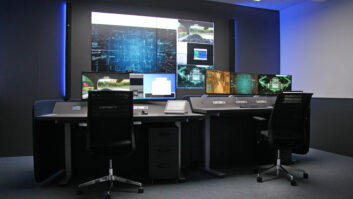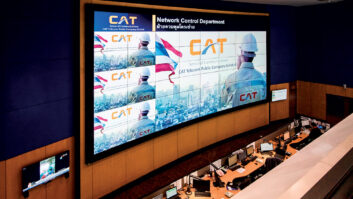 Perceptions of drones are changing and with that comes growing investments in the technology. PwC’s recent drones report reveals that by 2030, the unmanned aerial vehicle (UAV) industry is set to increase the UK’s GDP by £42 billion and create a net cost savings for the economy of £16 billion.
Perceptions of drones are changing and with that comes growing investments in the technology. PwC’s recent drones report reveals that by 2030, the unmanned aerial vehicle (UAV) industry is set to increase the UK’s GDP by £42 billion and create a net cost savings for the economy of £16 billion.
The growth in drone investments is linked to businesses ranging from agriculture to construction, media, and law enforcement who are beginning to identify the benefits to their industries. However, with significant predictions of growth on the horizon, this also comes with increasing potential to cause significant disruptions to industries.
This article will address that while the growth in the use of drones can bring lots of opportunities, it also presents risks. In particular, the two places where those risks are apparent are airports and data centres which have become a central part of a nation’s critical infrastructure. However, the risks drones bring do not come without solutions.
DROVE DISRUPTIONS
Despite various industries investing in drone technology to support their businesses, a growing use of drones comes with increasing risk of security drawbacks when their application is put to more malicious purposes. These purposes can range from a camera to conduct hostile reconnaissance to as a biological weapon.
In airports, disruptions have previously taken place due to traditional perimeter protection methods comprising physical barriers as well as advanced technologies effectively being bypassed by a drone. This is concerning when put into perspective that such drones can be available for as little as £200 while traditional perimeter protection procedures cost millions. On top of this, police and security personnel have very limited capability to verify drone activity even with numerous eyewitness accounts.
For instance, in 2018 Gatwick Airport was closed for 33 hours leading to the cancellation of 1,000 flights and affecting more than 140,000 passengers during Christmas which is one of the airport’s busiest periods. A key disruptor was that even following a police investigation and several eyewitness accounts, response teams lacked the ability to detect and verify the presence of aerial devices in good time. More recently, in June of this year flights at East Midlands airport were diverted and a runway closed following drone sightings earlier in the day which caused “operational disruption” lasting 48 hours and impacting a “small number of flights”.
ATTRACTIVE TARGET
It is only industries such as aviation which need to keep up with growing pressure to guard against threats arriving both physical and cyber in nature. Any disruption to operations through loss of critical online services and data could prove catastrophic in any sector. Periods of downtime can have significant cost implications and cause massive disruption to the people and businesses that rely so heavily on a seamless transfer of data. As such, data centres have become a target for cybercriminals, who are exploring every potential attack vector.
Being wise to new threats is key to being one step ahead, in line with this data centres have become infinitely more secure and reliable in recent years. Modern network-enabled systems are bringing considerable benefits to perimeter protection capabilities on the ground while incorporating video surveillance cameras, thermal cameras and radar to track intruders’ movements; and inside, cameras and sensors are being placed inside server rooms to detect and deter criminal activity.
However, thanks to UAV’s, the new threat may now come from the skies above. This could include, for example, a biological weapon or even a device which might be used by hackers to attempt to infiltrate the data centre’s systems to cause disruption or capture lucrative data. As a result, data centre operatives need to also consider them as potential threats.
DETERRING ACTIVITY
While relying on the eyes and ears of security personnel alone comes with limitations – particularly in drone detection, the use of dedicated software can complement network-enabled physical security solutions. This now allows drones to be detected based on the radio frequency (RF) signals that they omit and so can be used to identify the make and model of more than 200 drones, including commercial, hobbyist and DIY, even pinpointing the location of the operative. Compared to security staff, this technology provides a far more powerful solution to providing data centre operatives with advanced warning of a drone approaching and early indications of if there’s criminal intent.
When the presence of a drone has been successfully identified, the crucial next step is to establish the reason for its presence. With the support of a dedicated software, security personnel can pinpoint a drone and detect the signals given out by its operator’s equipment. Security personnel can then be dispatched to speak with the pilot. Where threatening incidents have been verified, swift identification is crucial to aiding early decision making. Drone detection software, capable of sending a signal to a PTZ (pan/tilt/zoom) camera can be used to lock-on to and track the movements of a drone, with crystal clear imagery used to ascertain the substance of its payload to distinguish friend from threat. Response teams can then react accordingly.
It’s not impossible for there to be genuine cases of misunderstanding, and where this takes place it may be useful to provide improved signage. To make it clear that drone operators will be challenged, network audio speakers can be used to issue pre-recorded audio messages or alerts, or other means of communicating that the location is out of bounds to aerial vehicles and devices.
POTENTIAL THREATS
Industries like aviation are continuing to struggle with staff shortages and maintaining operations, meanwhile, advancements to data centres to support security personnel and response teams are being increasingly valued.
It is beyond the parameters of relying on traditional perimeter security solutions and eyewitness accounts to monitor, detect and identify unlawful drone activity. As such, drone detection software can support physical security solutions. Additionally, signage improvements such as through network audio speakers can deter unwelcome drone operators before drastic measures are needed.
Existing video management systems (VMS) means that a drone detection solution can be part of an overarching and integrated system to improve security posture and ensure a smarter, safer world for all. Ultimately drone use promises much when in the right hands, but as with many things, we should be wise to its pitfalls.







